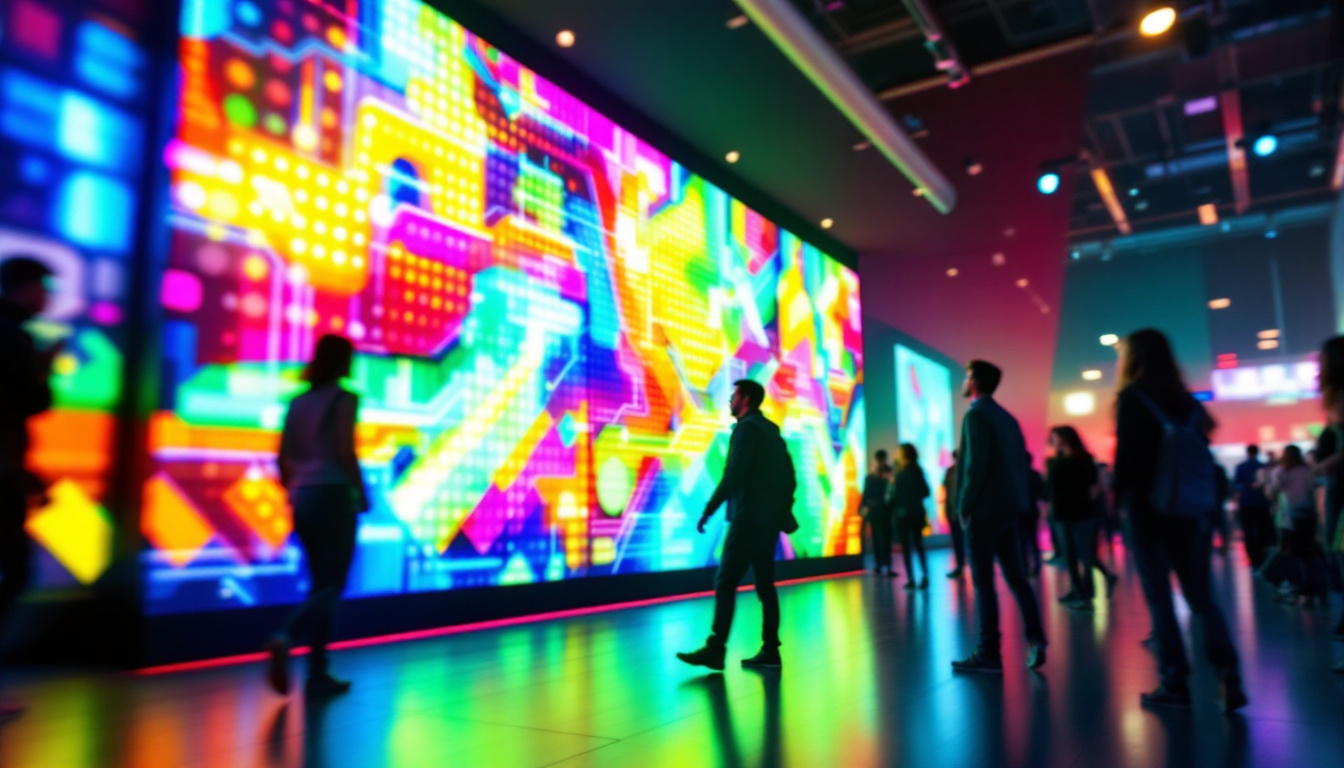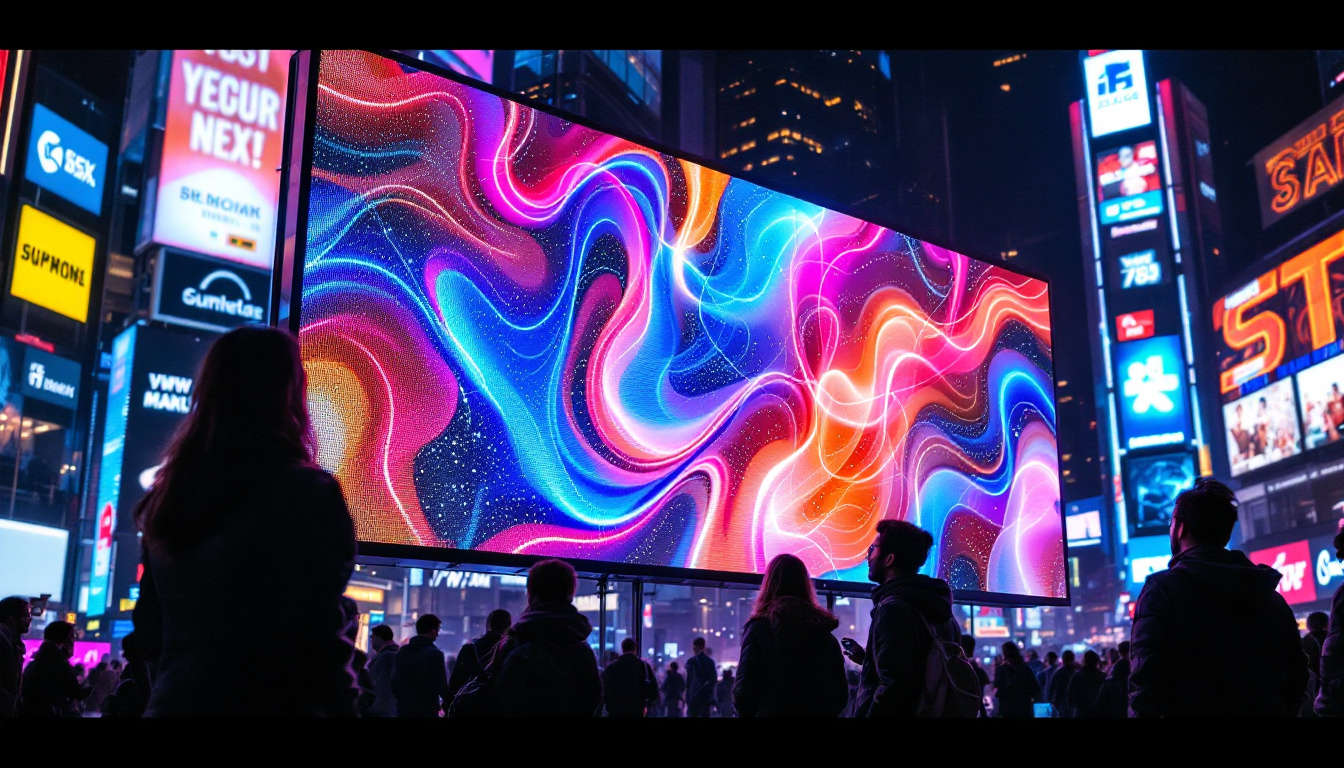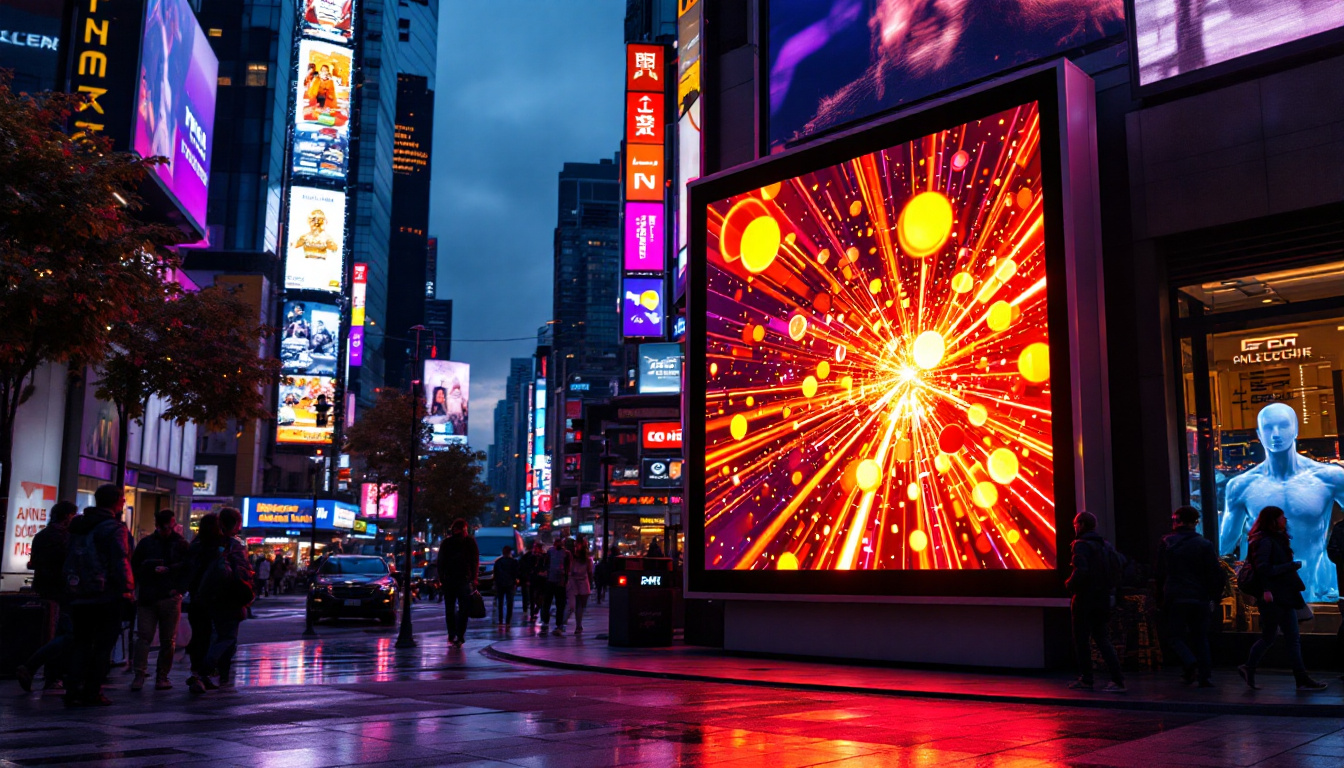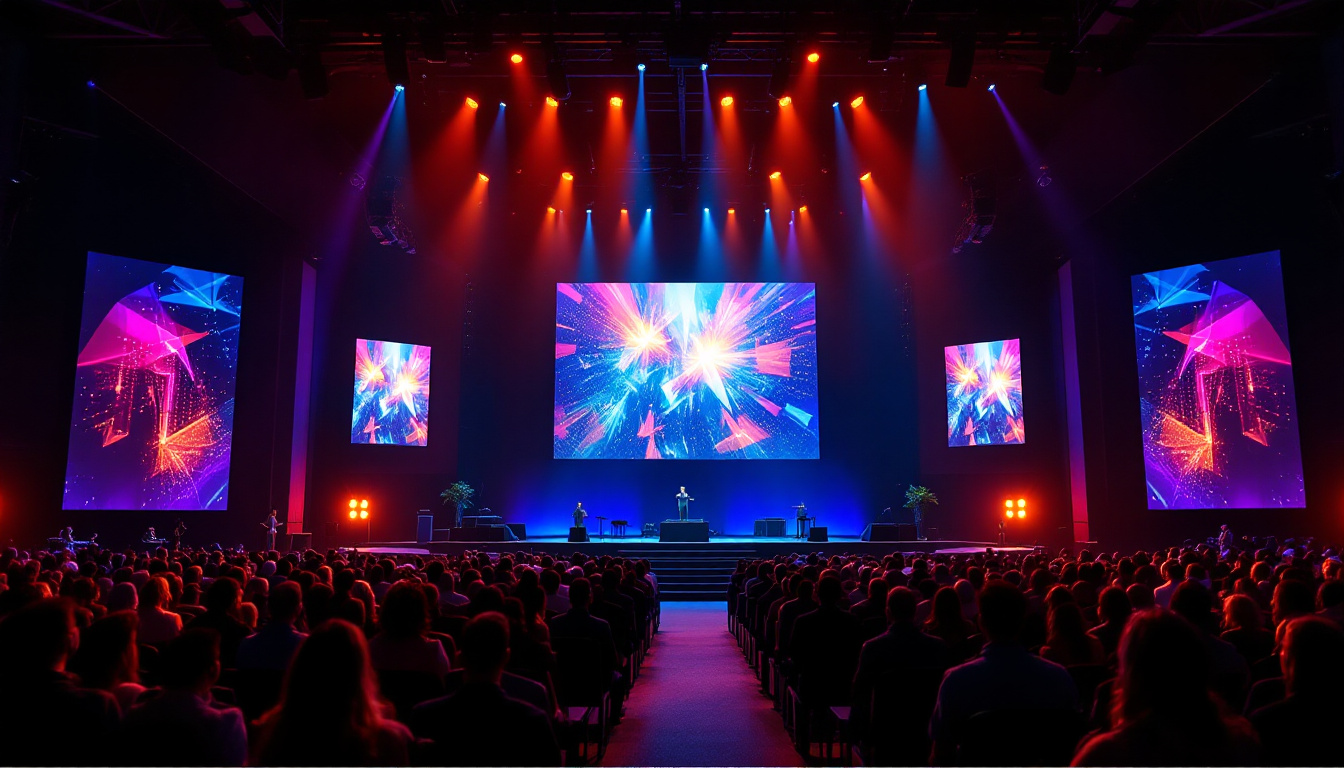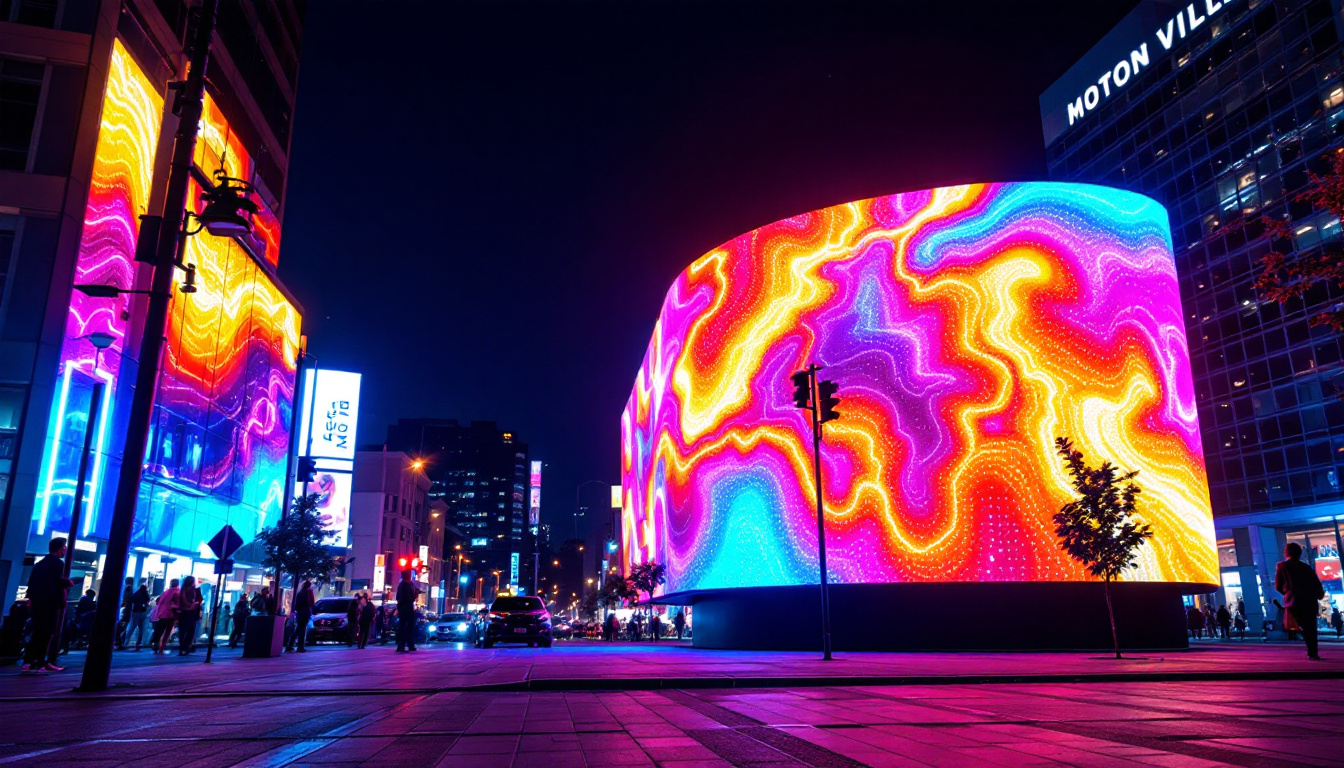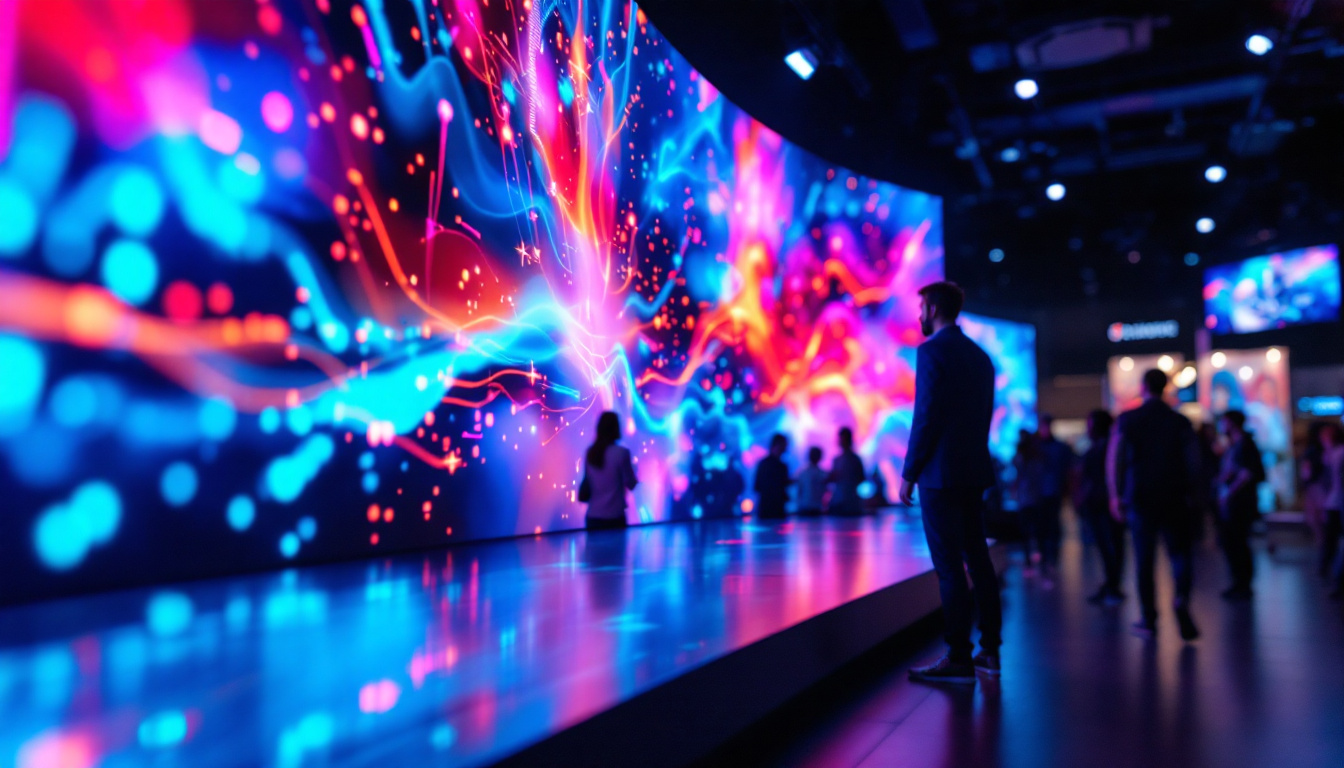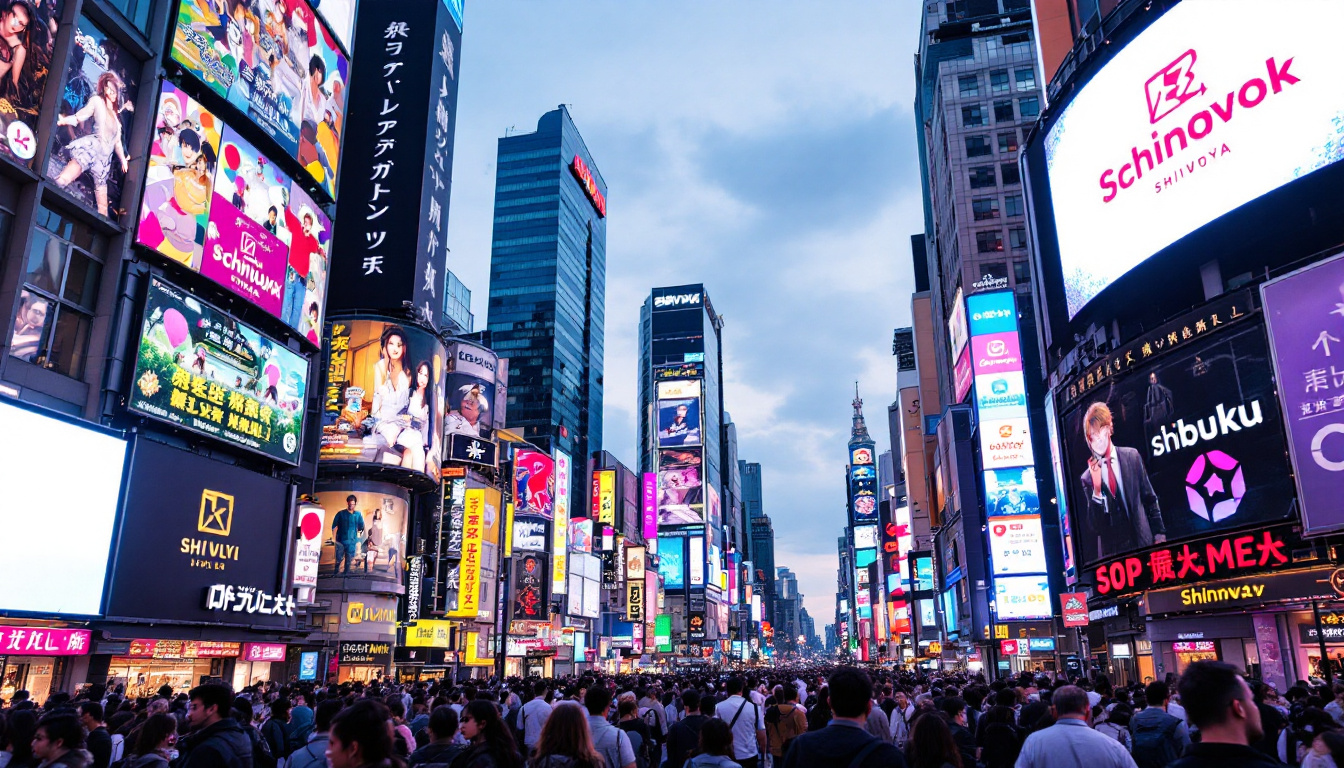In today’s rapidly evolving urban landscape, the integration of technology into public infrastructure has become increasingly important. One of the most innovative developments in this area is the concept of smart poles, which combine traditional lighting with advanced digital technology. These poles are equipped with LED displays that serve various purposes, from providing information to enhancing public safety. This article delves into the features, benefits, and applications of smart poles with LED displays.
What Are Smart Poles?
Smart poles are multifunctional streetlights that incorporate various technologies to improve urban living. Unlike standard streetlights, which primarily serve the purpose of illumination, smart poles are designed to support a range of applications, including environmental monitoring, Wi-Fi connectivity, and digital advertising. The integration of LED displays is a key feature that sets these poles apart.
Components of Smart Poles
Smart poles typically consist of several components that work together to enhance their functionality. These components may include:
- LED Lighting: Energy-efficient lighting that can be adjusted for brightness based on ambient conditions.
- digital displays: High-resolution screens that can display information, advertisements, or real-time data.
- Sensors: Devices that monitor environmental factors such as air quality, temperature, and noise levels.
- Wi-Fi Hotspots: Providing free internet access to the public, enhancing connectivity.
- Cameras: For security and surveillance purposes, contributing to public safety.
By integrating these components, smart poles create a comprehensive solution for urban environments, making them more efficient and responsive to the needs of citizens. Additionally, smart poles can incorporate renewable energy sources, such as solar panels, which not only power the lighting but also contribute to the sustainability goals of cities. This integration of green technology helps reduce the carbon footprint associated with urban infrastructure and promotes a cleaner environment.
Moreover, the data collected by the sensors in smart poles can be invaluable for city planners and researchers. By analyzing patterns in air quality, traffic flow, and noise levels, municipalities can make informed decisions about urban development and public health initiatives. This data-driven approach allows cities to adapt to the changing needs of their populations, ensuring that urban spaces remain livable and vibrant. As smart poles continue to evolve, they hold the potential to transform the way we interact with our urban landscapes, paving the way for smarter, more connected cities.
The Role of LED Displays in Smart Poles
LED displays are one of the most prominent features of smart poles, serving various functions that enhance urban life. These displays are not only visually striking but also versatile, capable of conveying a wide range of information.
Information Dissemination
One of the primary uses of LED displays on smart poles is to disseminate information to the public. This can include:
- traffic updates: Real-time information about traffic conditions, accidents, or road closures can help drivers make informed decisions.
- Public Announcements: Local governments can use these displays to communicate important announcements, such as emergency alerts or community events.
- Weather Updates: Displaying current weather conditions and forecasts can help residents plan their day.
By providing timely information, these displays contribute to a more informed and engaged community.
Advertising Opportunities
Another significant aspect of LED displays on smart poles is their potential for advertising. Businesses can utilize these screens to promote their products and services, creating a dynamic advertising platform in urban settings. This not only generates revenue for municipalities but also supports local businesses by increasing their visibility.
Moreover, the digital nature of these displays allows for targeted advertising, where messages can be tailored based on the time of day, weather conditions, or even the demographics of passersby. This capability enhances the effectiveness of advertising campaigns, making them more relevant to the audience.
Enhancing Public Safety
LED displays can also play a crucial role in enhancing public safety. For instance, they can be used to display emergency alerts, such as severe weather warnings or public safety announcements. In addition, the integration of cameras with smart poles allows for real-time monitoring of public spaces, helping law enforcement respond quickly to incidents.
Furthermore, the visibility of these displays can deter criminal activity, as potential offenders are aware that they are being monitored. This multifaceted approach to safety contributes to a more secure urban environment.
Benefits of Smart Poles with LED Displays
The implementation of smart poles with LED displays offers numerous benefits to urban areas, making them an attractive investment for municipalities and private entities alike.
Energy Efficiency
One of the most significant advantages of smart poles is their energy efficiency. LED lighting consumes significantly less energy compared to traditional incandescent or fluorescent bulbs. This reduction in energy consumption not only lowers operational costs but also contributes to sustainability efforts by reducing the carbon footprint of urban lighting.
Moreover, many smart poles are equipped with sensors that adjust the brightness of the lights based on surrounding conditions, further optimizing energy use. This intelligent lighting approach ensures that streets are well-lit when needed while conserving energy during low-traffic periods.
Improved Urban Connectivity
Smart poles enhance urban connectivity by providing free Wi-Fi access to residents and visitors. This feature is particularly beneficial in public spaces, where people often seek internet connectivity for navigation, communication, or information access. By bridging the digital divide, smart poles contribute to a more inclusive urban environment.
Additionally, the data collected from sensors can be used to inform city planning and infrastructure development. For instance, information about foot traffic patterns can help local governments make informed decisions about where to invest in public amenities.
Cost-Effective Solutions
Investing in smart poles can lead to long-term cost savings for municipalities. The combination of energy-efficient lighting and the potential for advertising revenue creates a sustainable financial model. Furthermore, the ability to collect data on environmental conditions and public usage can guide future investments, ensuring that resources are allocated effectively.
As cities continue to grow and evolve, the need for cost-effective solutions becomes increasingly critical. Smart poles with LED displays represent a forward-thinking approach to urban infrastructure that addresses both current and future challenges.
Challenges and Considerations
While the benefits of smart poles with LED displays are numerous, several challenges and considerations must be addressed to ensure their successful implementation.
Initial Investment Costs
The upfront costs associated with installing smart poles can be significant. This includes not only the poles themselves but also the necessary infrastructure to support their advanced features. Municipalities may need to explore funding options, such as public-private partnerships or government grants, to offset these costs.
Moreover, ongoing maintenance and operational expenses must be factored into the budget. Ensuring that the technology remains functional and up-to-date is crucial for maximizing the benefits of smart poles.
Data Privacy Concerns
As smart poles collect data from various sensors, concerns about data privacy and security arise. It is essential for municipalities to establish clear policies regarding data collection, usage, and storage. Transparency with the public about how data is used can help build trust and alleviate concerns.
Implementing robust cybersecurity measures is also critical to protect sensitive information from potential breaches. Striking a balance between leveraging data for urban improvement and safeguarding privacy is a challenge that must be navigated carefully.
Aesthetic Considerations
The design and placement of smart poles can impact the visual aesthetics of urban environments. It is important to consider how these structures fit into the existing landscape and whether they enhance or detract from the overall ambiance of the area.
Engaging with the community during the planning phase can help address aesthetic concerns and ensure that the design aligns with the values and preferences of residents. Thoughtful integration of smart poles into the urban fabric can enhance the overall appeal of public spaces.
Future Trends in Smart Poles
The future of smart poles with LED displays is promising, with several trends expected to shape their evolution in urban environments.
Integration with Smart City Initiatives
As cities increasingly adopt smart city initiatives, the role of smart poles will become even more significant. These poles can serve as nodes in a larger network of interconnected devices, facilitating communication between various systems, such as traffic management, public transportation, and environmental monitoring.
This integration will enable cities to respond more effectively to challenges, such as traffic congestion, pollution, and public safety concerns. The data collected from smart poles can inform decision-making and optimize resource allocation, leading to more efficient urban management.
Advancements in Technology
Technological advancements will continue to enhance the capabilities of smart poles. Innovations in LED technology, such as improved energy efficiency and color rendering, will further elevate the functionality of these displays. Additionally, the development of artificial intelligence and machine learning algorithms can enable smarter data analysis and decision-making.
As technology evolves, smart poles will likely incorporate even more features, such as augmented reality displays, interactive interfaces, and advanced environmental sensors, creating a more immersive and responsive urban experience.
Community Engagement and Customization
Future trends will also emphasize the importance of community engagement in the design and implementation of smart poles. Local governments may seek input from residents to ensure that the features and functionalities align with community needs and preferences.
Customization options for smart poles may become more prevalent, allowing municipalities to tailor their designs and functionalities to suit specific neighborhoods or districts. This approach fosters a sense of ownership and pride among residents, enhancing the overall impact of smart poles in urban environments.
Conclusion
Smart poles with LED displays represent a transformative approach to urban infrastructure, combining technology with public service. Their multifunctionality, energy efficiency, and potential for enhancing public safety make them an attractive solution for modern cities. While challenges exist, the benefits far outweigh the drawbacks, paving the way for a smarter, more connected urban future.
As cities continue to evolve, the integration of smart poles will play a crucial role in shaping the urban experience. By embracing this innovative technology, municipalities can create more livable, sustainable, and engaging environments for their residents.
Discover LumenMatrix LED Display Solutions
As we look towards a future where smart poles redefine our urban landscapes, LumenMatrix stands at the forefront of this technological revolution. With a commitment to innovation and excellence, LumenMatrix offers a wide array of LED display solutions that bring your city’s vision to life. From captivating Indoor LED Walls to dynamic Outdoor LED Displays, and from versatile Vehicle LED Displays to engaging LED Sports Displays, our products are designed to integrate seamlessly with smart poles, enhancing public communication and safety. Experience the transformative power of LED technology and take the first step towards a brighter, more connected community. Check out LumenMatrix LED Display Solutions and join us in shaping the future of urban infrastructure.







